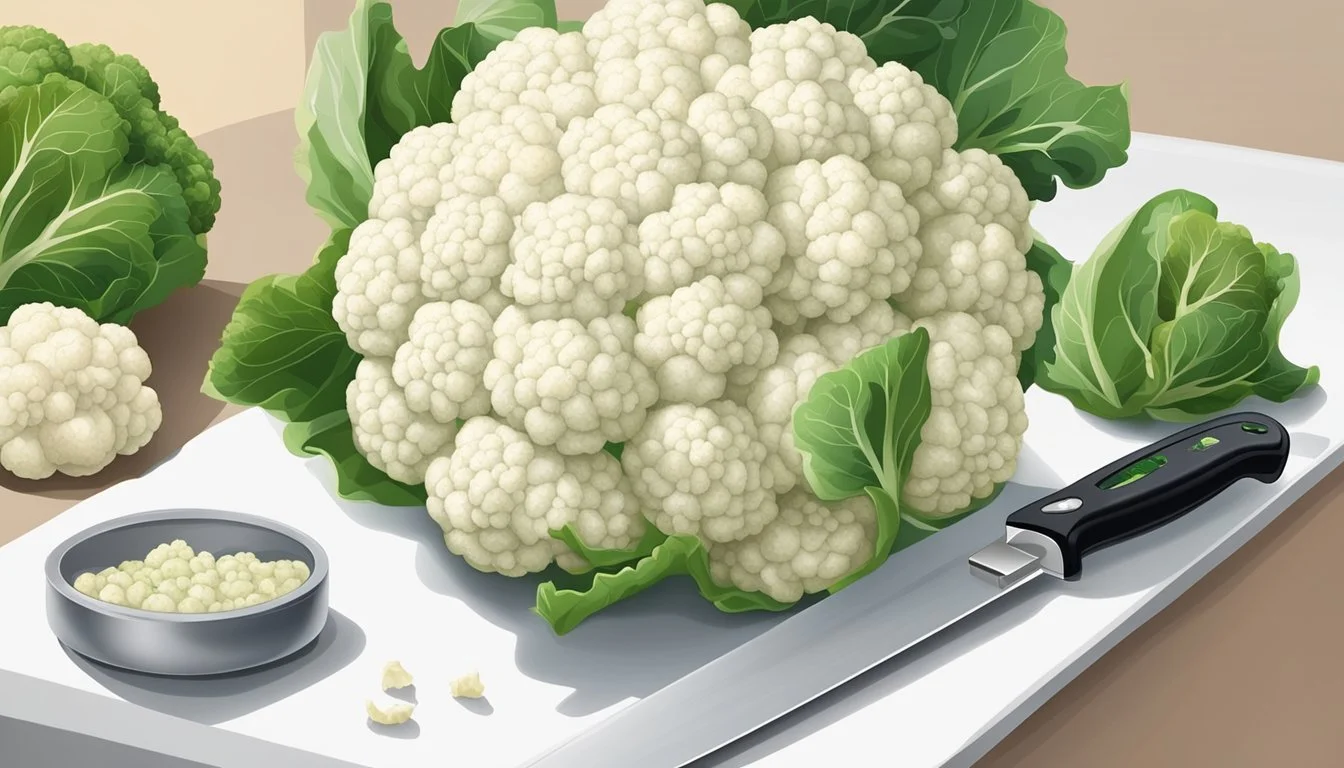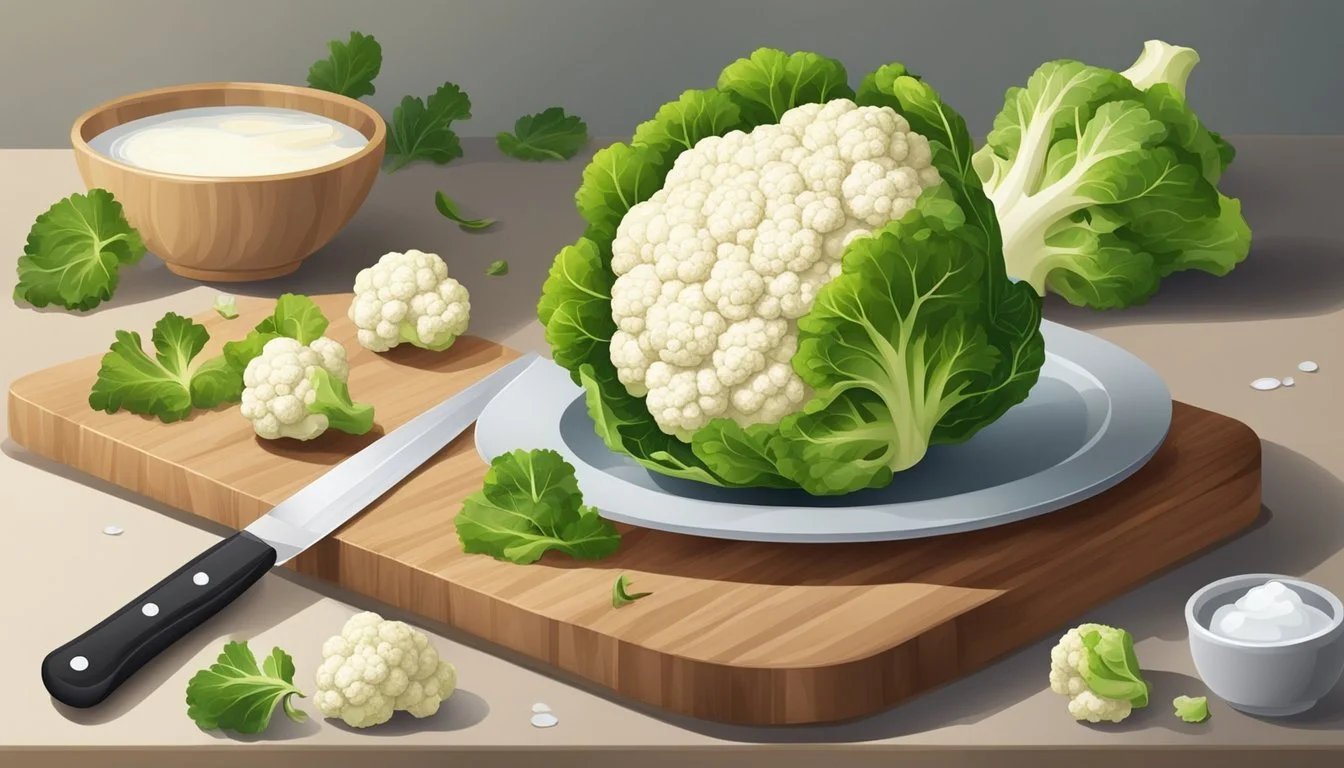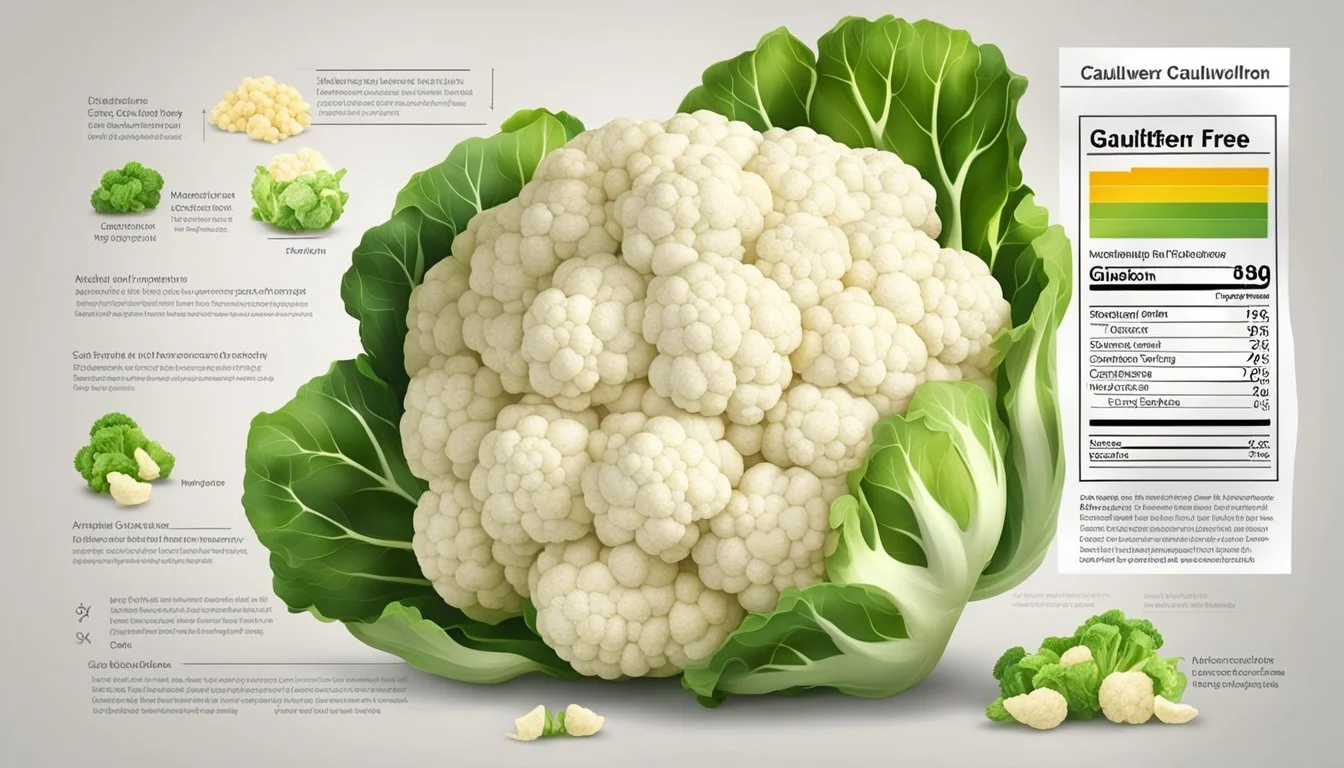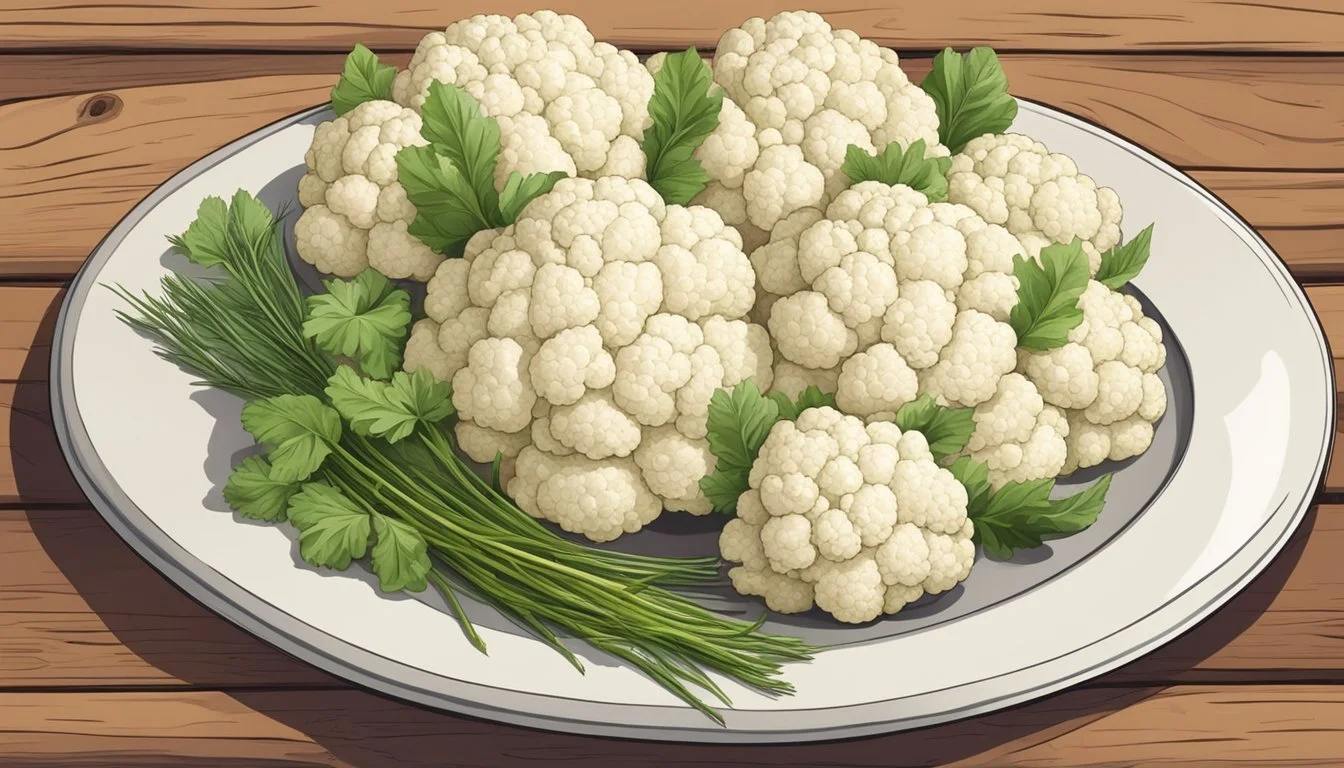How Long Do Gluten-Free Cauliflower Florets Last?
Shelf Life and Storage Tips
Cauliflower florets, especially when part of a gluten-free diet, are a versatile and nutritious choice for many meals. Proper storage significantly impacts their shelf life, ensuring that you can enjoy their full flavor and nutritional benefits. When stored in the refrigerator, fresh cauliflower florets can last up to four days.
For longer preservation, freezing is an excellent option. Before freezing, it's important to blanch the florets briefly to maintain their taste and texture. In this condition, frozen cauliflower florets can retain their quality for up to 12 months.
In any storage scenario, signs of spoilage like black spots or mold indicate that the cauliflower should no longer be consumed. Ensuring proper storage practices is key to extending the shelf life of gluten-free cauliflower florets and maximizing their culinary uses.
Understanding Cauliflower Florets
Cauliflower florets are a versatile ingredient prized for their culinary flexibility, health benefits, and various varieties. They can be used in numerous recipes ranging from side dishes to main courses.
Varieties of Cauliflower
Cauliflower comes in several varieties. The most common is the white cauliflower, but there are also colorful types such as purple, green, and orange. These varieties not only add visual appeal but also different flavors and nutrients to dishes.
White Cauliflower: The most traditional type, often used in standard recipes.
Purple Cauliflower: Contains antioxidants called anthocyanins, contributing to its color.
Green Cauliflower: Sometimes called broccoflower, has a slightly sweeter taste.
Orange Cauliflower: Known for its high beta-carotene content, which gives it its orange hue.
Health Benefits of Cauliflower
Cauliflower florets offer several health benefits. They are low in calories but high in vitamins C and K, fiber, and antioxidants. This makes them a nutritious addition to any diet.
Fiber: Helps in digestive health.
Vitamins C and K: Support immune function and bone health, respectively.
Antioxidants: Protect against inflammation and chronic diseases.
Including cauliflower in a gluten-free diet can be beneficial due to its nutrient density and low-calorie content. It can support overall health while providing essential vitamins and minerals.
Culinary Uses of Cauliflower Florets
Cauliflower florets are used in many culinary applications. They can be roasted, steamed, or grilled and are commonly found in dishes like cauliflower rice, mashed cauliflower, or even as a base for gluten-free pizza crusts.
Roasting: Enhances their natural sweetness and creates a crispy texture.
Steaming: Maintains most of their nutrients and is a quick cooking method.
Grilling: Adds a smoky flavor that complements various seasonings and sauces.
These florets can replace grains in recipes for a low-carb, gluten-free option. They can be used as a side dish or part of a main course, making them a versatile ingredient in diverse culinary practices.
Preparation Tips for Cauliflower Florets
Proper preparation of cauliflower florets can enhance their taste and texture when cooking. Key steps include washing and cutting, blanching, and seasoning.
Washing and Cutting
Start by washing the cauliflower under cold running water to remove any dirt. Pat it dry using a clean towel.
Cut off the stem and remove any leaves. Break the cauliflower into bite-sized florets with a knife or by hand for a more rustic look.
Make sure the florets are of uniform size for even cooking. Keep the prep time in mind as washing and cutting generally takes about 10-15 minutes.
Blanching Techniques
Blanching is an optional but beneficial step. It helps retain the cauliflower's color and improves its texture.
Begin by bringing a pot of water with a pinch of salt to a boil. Add the cauliflower florets and blanch for 3-5 minutes.
Once the florets are slightly tender, transfer them to an ice bath to stop the cooking process.
Drain well and pat dry before proceeding to seasoning.
Seasoning for Taste
Seasoning is crucial to enhance the flavor of cauliflower. Basic ingredients include salt, pepper, garlic powder, and fresh or dried parsley.
Toss the florets in olive oil to help the spices adhere. Add a sprinkling of salt and pepper to taste.
Garlic powder brings a subtle yet distinct flavor, while parsley adds a fresh, herbaceous note.
Mix well to ensure even coating and proceed with your chosen cooking method.
By following these preparation tips, you're on your way to perfectly prepped cauliflower florets that will cook evenly and take on delicious flavors.
Storing Gluten-Free Cauliflower Florets
Proper storage methods can significantly extend the life of gluten-free cauliflower florets, whether they're kept in the refrigerator or freezer. Recognizing and understanding the signs of spoilage is just as important to ensure food safety and quality.
Refrigeration Practices
To maximize the freshness of gluten-free cauliflower florets when storing them in the refrigerator, keep them in an airtight container or a seal-able plastic bag. This helps prevent excess moisture or exposure to air, which can speed up spoilage.
Precut florets generally last up to 4 days in the fridge. For better results, line the container with a paper towel to absorb extra moisture. Ensure the refrigerator is set to a temperature below 40°F (4°C).
If using fresh cauliflower heads, avoid washing them until ready to use. This reduces moisture that could lead to premature rot.
Freezing Methods
Freezing is an excellent method for long-term storage, keeping cauliflower florets edible for 10 to 12 months. Before freezing, blanch the florets by boiling them for 2-3 minutes and then shocking them in an ice water bath to halt the cooking process.
After blanching, thoroughly drain and pat dry the florets. Spread them on a baking sheet and freeze until firm. Then, transfer the florets to an airtight freezer bag, ensuring to remove as much air as possible before sealing. Properly labeled bags with the date help track storage times.
Understanding Spoilage Signs
Even with proper storage, cauliflower florets can spoil. Key indicators include discoloration, where florets turn from a creamy white to yellow or brown. A foul smell is another clear sign, indicating bacterial growth.
Textural changes, such as sliminess or becoming overly soft, also suggest spoilage. Regularly check stored cauliflower for these signs to ensure you are consuming fresh and safe produce. Discard any florets that exhibit these spoilage characteristics immediately to avoid potential health risks.
Cooking and Baking Cauliflower
Cooking and baking cauliflower involves simple but effective methods to bring out its flavor and texture. Roasting and creating creamy cauliflower dishes are popular ways to enjoy this versatile vegetable. Gluten-free breadcrumbs can enhance many cauliflower recipes, making them suitable for varying dietary needs.
Roasting Cauliflower Florets
Roasting cauliflower florets results in a delicious, nutty flavor. Preheat the oven to 400°F. Cut the cauliflower into florets, ensuring they are evenly sized. Place them on a baking sheet lined with parchment paper. Drizzle with olive oil, and sprinkle with salt and pepper. Optionally, add garlic powder for extra flavor. Toss to coat the florets evenly and arrange them in a single layer. Bake for 25-30 minutes, flipping them halfway through the cook time for even browning.
Creating Creamy Cauliflower Dishes
Creamy cauliflower dishes offer a comforting and rich flavor profile. One popular dish is cauliflower gratin. Start by making a sauce using gluten-free flour and milk, thickened with cheese. Preheat the oven to 375°F. Coat the cauliflower florets with the sauce, ensuring an even layer. Place the mixture in a greased baking dish. Top with additional cheese and a breadcrumb topping if desired. Bake for 20-25 minutes, until bubbly and golden.
Gluten-Free Breadcrumb Alternatives
Traditional breadcrumbs are easily substituted with gluten-free options for those with dietary restrictions. Gluten-free flour, ground nuts, or gluten-free bread crumbs can be used effectively. Ground nuts like almonds or cashews add a unique flavor and crunchy texture. For a quick alternative, crush gluten-free cereal. When making cauliflower dishes like gratin, these alternatives can be mixed with olive oil or melted butter to create a crunchy topping. This not only maintains texture but also enhances the overall flavor.
Gluten-Free Recipes Involving Cauliflower
Cauliflower is a versatile vegetable often used in gluten-free recipes. It can be transformed into various dishes that cater to different dietary preferences.
Cauliflower Gratin Recipe
A Cauliflower Gratin is a creamy, gluten-free side dish ideal for holidays or special occasions. To prepare, start by boiling cauliflower florets until tender. Prepare a cheese sauce by mixing butter, gluten-free flour, milk, and shredded cheese until smooth. Mix the boiled cauliflower with the cheese sauce in a large pot.
Pour the mixture into a greased baking dish, sprinkle with more cheese, and bake until golden and bubbly. This dish pairs well with roasted meats and offers a comforting, rich flavor.
Buffalo Cauliflower Wings
Buffalo Cauliflower Wings are a gluten-free alternative to traditional buffalo wings. Begin by cutting a head of cauliflower into bite-sized florets. Coat them in a mixture of gluten-free flour, water, garlic powder, and paprika. Bake the coated florets at 425°F until crispy.
Toss the baked florets in a buffalo sauce made of hot sauce and melted butter. Bake for an additional 10 minutes. Serve these spicy, crispy wings with celery sticks and a side of ranch or blue cheese dip.
Vegan Cauliflower Options
For vegan options, cauliflower can be used in numerous creative ways. One popular recipe is Cauliflower Rice. Using a food processor, grate cauliflower into rice-sized pieces. Sauté the riced cauliflower in olive oil with garlic, salt, and pepper for a quick, gluten-free side dish.
Another favorite is Cauliflower Steaks. Slice a cauliflower head into thick "steaks," season with olive oil, salt, and pepper, and roast at 400°F until tender. These can be topped with chimichurri sauce for added flavor. Vegan cauliflower recipes offer nutritious, plant-based alternatives that are both satisfying and versatile.
Nutritional Information and Diet Considerations
Cauliflower is a nutritious and versatile vegetable suitable for many diets, including gluten-free, vegan, and low-carb plans. Its benefits include being low in calories and rich in fiber, which can aid in maintaining a healthy lifestyle.
Caloric Content of Cauliflower
Cauliflower is low in calories, making it an excellent food for weight management. A cup of raw cauliflower contains approximately 25 calories. This low caloric content allows it to be included in various meals without significantly increasing the overall calorie count.
It’s also moist and has a mild flavor, which can be enhanced with various seasonings.
Incorporating Cauliflower in Various Diets
Gluten-Free Diets: Cauliflower is naturally gluten-free and serves as a great substitute in recipes that require a gluten-free alternative. This makes it an excellent choice for those with gluten sensitivities or celiac disease.
Vegan Diets: Cauliflower is vegan-friendly and can be used to create hearty meals. It's rich in fiber and essential nutrients, making it a valuable addition to plant-based diets.
Low-Carb Diets: Since it’s low in carbohydrates, cauliflower can replace higher-carb foods such as rice and potatoes. This is particularly beneficial for those following ketogenic or other low-carb eating plans.
In summary, incorporating cauliflower into different diets supports diverse nutritional needs while maintaining dietary restrictions.
Serving Suggestions and Presentation
When preparing gluten-free cauliflower florets, it's essential to focus on garnishing and pairing them with complementary dishes to enhance the dining experience.
Garnishing and Plating
To make your cauliflower florets visually appealing, consider garnishing them with fresh herbs like parsley. Chop the parsley finely and sprinkle it over the florets right before serving to add a burst of color and freshness.
For a richer presentation, lightly drizzle lemon juice or a sauce such as buffalo sauce over the florets. This adds both flavor and visual appeal. Using a colorful plate or serving dish can also make the presentation more attractive. Arrange the florets in a single layer on the plate, making sure they are evenly spaced to prevent a crowded look.
Pairing with Other Dishes
Cauliflower florets are versatile and can be paired with various dishes to create a balanced meal. Serve them as a side dish next to a protein like grilled chicken or fish. The mild flavor of the cauliflower complements the savory tastes of these proteins, enhancing the overall dining experience.
Pair the florets with a grain-based dish like quinoa or brown rice to add a hearty component to your meal. Alternatively, serve them alongside a vibrant salad for a lighter, refreshing option. Since cauliflower florets are gluten-free and plant-based, they also pair well with vegetarian and vegan main courses, providing a crispy and appealing texture to the meal.
Online Presence and Social Sharing
Effective online marketing and community engagement strategies are essential for promoting gluten-free cauliflower recipes. Utilizing social media platforms and food communities can drive traffic and increase recipe visibility.
Marketing Cauliflower Recipes on Social Media
Harnessing the power of social media platforms like Instagram, Facebook, and Pinterest can significantly boost the reach of gluten-free cauliflower recipes. Visual content, such as high-quality images and short videos, tends to perform well on these platforms.
Instagram is ideal for sharing beautiful photos and engaging stories. Use relevant hashtags like #GlutenFree, #CauliflowerRecipes, and #HealthyEating to attract a larger audience.
Facebook groups dedicated to gluten-free living or healthy recipes are effective for community engagement and sharing posts. Include links to your blog and encourage comments and shares.
On Pinterest, create visually appealing pins that link back to your recipe site. Group your recipes into boards like “Gluten-Free Dinners” or “Healthy Snacks” to make them easy to find.
Engagement with Food Communities
Engaging with online food communities provides opportunities for building a loyal following and gaining valuable feedback. Platforms such as Reddit, specialty blogs, and cooking forums are valuable.
Participate in relevant subreddits like r/glutenfree or r/food, where users share recipes, tips, and experiences. Respond to comments and questions to establish authority and build connections.
Contribute guest posts to food blogs focused on gluten-free cooking. This can increase visibility and establish credibility in the niche.
Amazon Associate links can be included in posts for recommended kitchen tools and ingredients. This can generate affiliate income while providing helpful resources to readers.
Frequent interaction keeps followers engaged and drives repeated traffic to your content. Links and active participation foster a supportive and interactive environment.
Frequently Used Ingredients with Cauliflower
When preparing cauliflower-centric dishes, several key ingredients often enhance both flavor and texture. These common ingredients seamlessly blend to create delicious and satisfying meals.
Creating Flavorful Spice Mixes
Spices are essential for elevating the taste of cauliflower dishes. Turmeric, for its vibrant color and earthy flavor, and cumin can add a rich, warm taste. Garlic powder and onion powder are staples, offering a savory depth, while black pepper adds a hint of heat.
Butter is frequently used to add a creamy texture and helps in absorbing and distributing the spices evenly. For a dairy-free option, various vegetable oils can be used. Parmesan cheese often features in gratin recipes, providing a salty, umami boost.
Chopped parsley is perfect for adding freshness and a pop of color, contrasting beautifully with the roasted or baked cauliflower. For incorporating milk, it helps create a smooth and luxurious sauce when combined with flour, as seen in au gratin recipes, giving a rich, comforting flavor.











